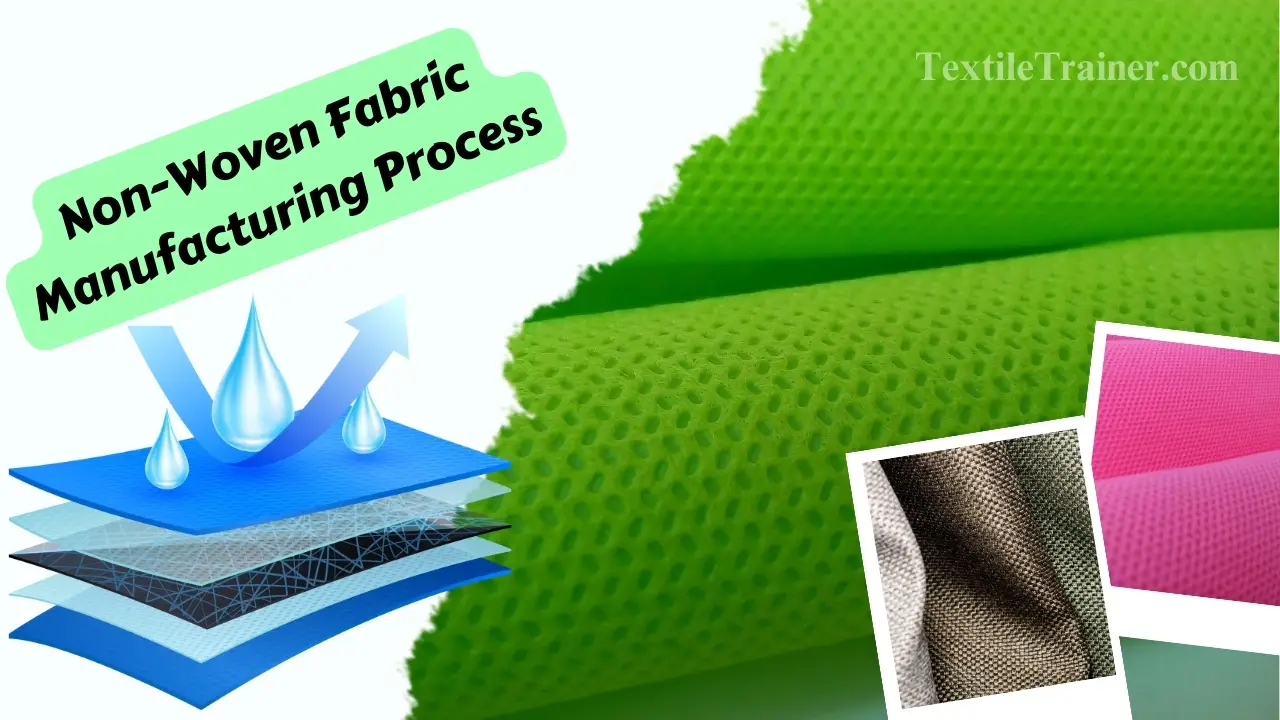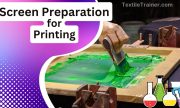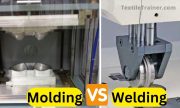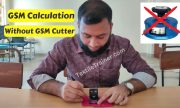Introduction:
Non-woven fabric manufacturing process is described in this article. Non-woven fabric is created with staple or short, long, or continuous long fibers. This fabric is bonded together with treatments like chemical, mechanical, and heat. It is neither woven nor knit fabric. However, its unique manufacturing process allows the fabric to have distinct features and makes it suitable for a wide range of application areas. This article covers facts about non-woven fabric, its manufacturing process, and its application fields. However, let’s come to the learn definition of non-woven fabric.
What is Non-woven Fabric?
Non-woven fabrics are flexible products that consist of more than one fiber layer. These one or more fiber layers can be oriented in one direction or can be deposited randomly. Non-woven fabrics are bonded by chemical, mechanical, or thermal treatments. Fundamentally, non-woven are planar structures. They are not made using the process of weaving and knitting. Also, they do not require the conversion of the fibers to yarn.
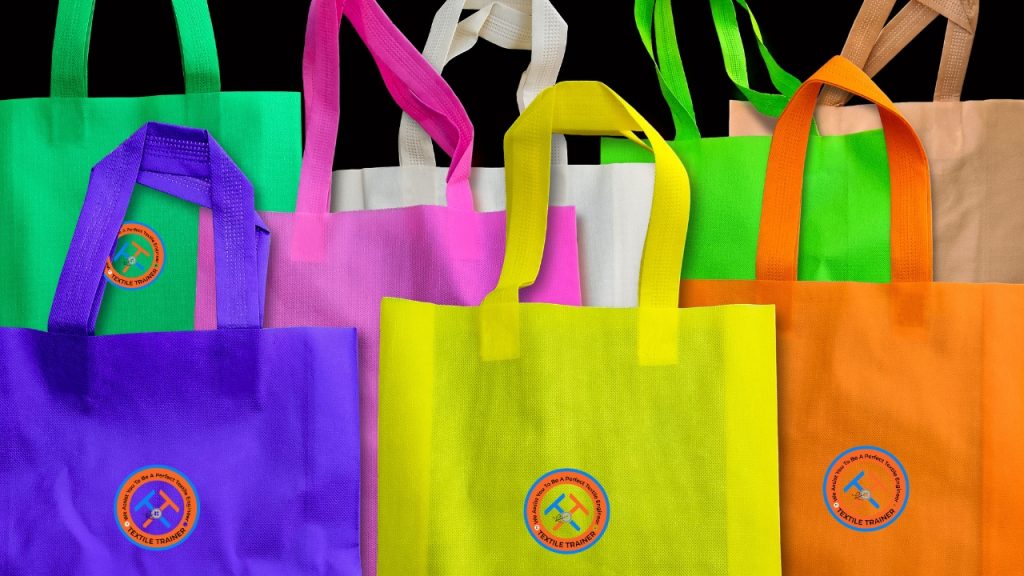
Non-Woven Fabric Manufacturing Process:
The manufacturing process of non-woven fabric is simple and continuous. There are two major operations involved in the non-woven fabric manufacturing process. They are web laying and web bonding. These two operations are performed on two consecutive machines. The formation of the non-woven fabrics can be described in 3 basic steps. These 3 steps are:
Step-1: Web Formation:
This step, the web formation, has a crucial contribution to the end-use of the product performance. 3 common sub-methods are there in this step of web formation. They are Dry laid, wet-laid, and polymer-laid.
- Dry Laid: Major staple fibers are used in three essential processes during manufacture. Fiber preparation consists of opening and mixing, followed by web construction via carding or air-lay procedures. The next step is web stacking, which is accomplished using parallel lay, cross-lay, and perpendicular-lay processes. The dry-laid procedure uses conventional staple fibers, which typically range in length from 12 to 100mm. Classical textile carding or air-laying machines are used in this approach to mechanically separate and align the staple fibers to create a fiber web.
- Wet Laid: The fabrication of nonwoven fabric is inextricably tied to the papermaking process. This method involves scattering fibers in fluids. Similar to papermaking, very short fibers are disseminated in water and deposited on a perforated lattice. Wet-laid nonwoven manufacturing involves mixing fibers with chemicals to generate a slurry, which is then dissolved in water. Specific paper machines are used to remove water from the fibers, resulting in a uniform sheet or web. This substance is subsequently bonded and cured. Fibers shorter than 10 mm in length are ideal for the wet-laid nonwoven method, which produces fabric weighing between 10 and 540 g/m2. Compared to the air-laid technique, wet-laid nonwoven has advantages such as high productivity, consistency, and control over fiber orientation.
- Polymer Laid: Extrusions, like spun-bond, melt-blown, and porous film systems, create polymer-laid nonwovens. This method employs machinery for polymer extrusion, common in synthetic filament production. In spunlaid, the melted polymer is extruded through spinnerets, forming continuous filaments cooled on a conveyor belt to create a uniform web. Filaments adhere when sufficiently warm.
Step-2: Web Bonding:
The web bonding step consists of 5 sub-methods. They are needle punching, stitch punching, thermal, chemical bonding, and hydroentanglement.
- Needle Punching: Needle punching is a technique for joining nonwoven web constructions by mechanically connecting threads throughout the web. Barbed needles positioned on a board punch fibers into the web, causing an entangled effect when removed due to their non-aligned spacing.
- Stitch Bonding: Stitch bonding refers to the technique for joining fiber webs that uses knitting elements to interlock the fibers, either with or without yarn. Several yarn types can be used. These fabrics are used for home furnishings, vacuum bags, geotextiles, filtration, and interlinings. Stitch-bonded fabrics are rapidly replacing woven materials in a variety of applications due to their faster production rate and much cheaper manufacturing costs.
- Thermal Bonding: Thermal bonding stabilizes a web of thermoplastic fibers using heat without the need for latex or resin binders. Common in baby diaper cover stocks, polypropylene with a low melting point is preferred. The web passes through heated calendar rollers, with embossed rolls adding softness and flexibility, while smooth rolls enhance strength but reduce drape and softness.
- Chemical bonding: It is a popular web bonding technique that involves the application of a chemical binder, typically latex, which is subsequently cured. Application methods include saturation, spray, print, and foam bonding.
- Hydro entanglement: This process involves fluid forces to drive fine water jets through a web supported by a conveyor belt. Entanglement happens when water strikes the web, deflecting fibers and causing them to become entangled.
Step-3: Fabric Finishing:
Fabric finishing is the process of improving nonwoven fabrics during or after web creation. Common finishing treatments are designed to improve practical features such as moisture transport, absorbency, flame retardancy, and others, as well as aesthetic aspects such as look and color. Finishing options include chemical, mechanical, and thermal-mechanical.
Fabric finishing consists of 2 sub-methods: Chemical and Mechanical finishing. Here, Chemical finishing is the process of improving the characteristics of fabric surfaces by applying coatings or additives. Mechanical finishing alters the texture by physically restructuring fibers, whereas thermal finishing, such as calendaring, uses heat to set structural changes. Because of the fragility of nonwoven structures, these operations necessitate extra caution. Each finishing type helps to improve fabric performance and appearance.
Application of Non-woven Fabric:
Different types of non-woven fabric have a wide range of application fields. For instance:
- Medical and Hygiene
- Packaging
- Agriculture
- Automotive
- Construction and Geotextile
- Clothing
- Home
- Automotive
- Industrial
Conclusion:
To sum up, non-woven fabrics offer unique features. These fabrics have such boned connections through treatments of mechanical, chemical, and thermal. Non-woven fabrics involve natural or synthetic fibers. They are the most cost-effective. It has applications in the production of disposable medical products, hygiene, geotextiles, and automotive textiles.
You May Read:
- Best Wool for Warmth: Top 10 Types of Wool in the World.
- Best 10 Jeans Brands for Men in the world.
- Best 20 Types of Denim Fabric in the world.
- 10 Most Important Difference between Denim and Jeans.
- Best 4 Types of Composite Test for Smart and Sustainable Composite.
- Types of Garments Dyeing Machine Used in Garments Washing Plant.
- Classification of Technical Textile with Proper Example.
- Exploring Innovative 4 Alternative Methods of Fabric Joining.
- Ski Suit: The Ultimate Gear for Winter Adventure.
- Racing Drivers Apparel: The Perfect Blend of Performance and Safety.

